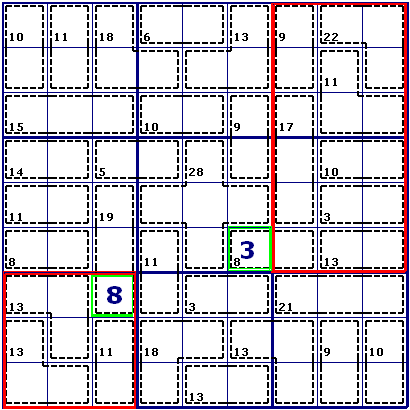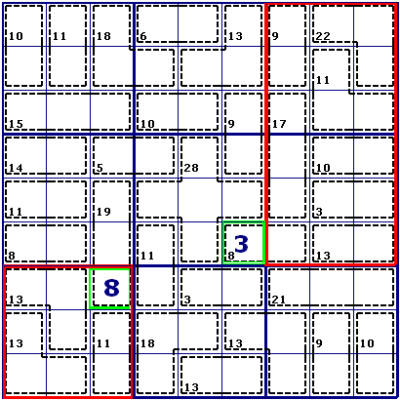This tip is probably the most important solving technique of Killer Sudoku, one that will save you a lot of time. It does involve some math, but very simple one.
Basically, the whole story is that you have to bear in mind that 1+2+3+4+5+6+7+8+9 = 45. Very smart, huh? Well, maybe not so, but it’s extremely helpful for solving Killer Sudokus. Why? Because the sum of every 3×3 “box” (not “cage”!) and also of every row and column is precisely 45.
And how does that help?
It helps if you find a 3×3 “box” filled entirely by a few “cages” except that one (and only one) of those cages has a single cell outside of that same box. If you’re lucky enough and find such a box, you add up the cage totals for the cages from that box and subtract 45. The result is the value of that single cell that’s outside the box. This is called an “outie”.
Similarly, all but one cell of a box can belong to a few cages with no cells sticking outside the box. That one cell which belongs to another cage is called an “innie”. It’s value must be 45-(the sum of cages within that box).
Both examples are shown in this puzzle. The outie is the number 3 in a green square, and the innie is the number 8 in another green square:

Find something strange there?
Well, the innie is just as I described: 45-(13+13+11) = 45-37 = 8.
However, the outie comes from two combined boxes. Therefore, it’s value is (9+22+11+17+10+3+13+8)-2*45 = 93-90 = 3.
You can combine any number of boxes in this way. A more difficult way to find innies and outies is by looking at rows and columns, but that will be explained some other time.


















0 Comments